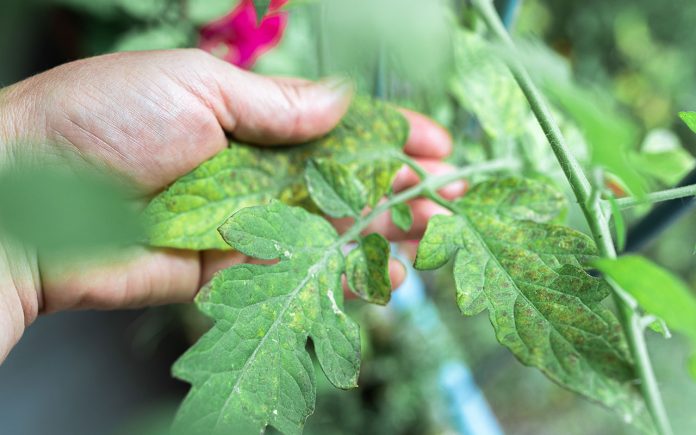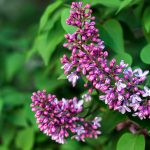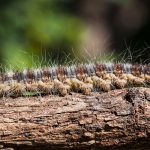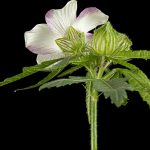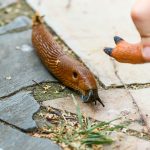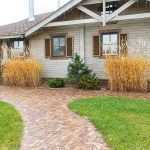Do your plants have white spots on their leaves and stems? It is a somewhat common disease that is caused by several fungi. Powdery mildew is also called white or ashy because of its appearance, as they are white spots like dusty. This disease weakens the plant little by little, it can even kill it, since if we let the problem pass and it advances, in the end it feeds on the whole plant and spreads to others. There are products on the market that can help you treat this problem, but some can be toxic for us and our pets, they can end up damaging the plant and not only the condition it has and contaminating the environment. Luckily, there are also natural and ecological remedies.
In this GreenEcology article we bring you the best tips on how to combat powdery mildew with home remedies. Notes!
What is powdery mildew in plants and its causes
As we have pointed out before, powdery mildew in plants is a disease caused by fungi that leaves the leaves with the appearance that we can see in the main image of this article and in the one below, that is, as with a white powder, which are fungi, and that weakens the plant.
The main causes of powdery mildew in plants are due to a combination of factors that lead to the appearance of fungi. Specifically, powdery mildew appears in gardens and orchards where there is too much humidity, little ventilation and little natural light and, in addition, it can also influence the genetics of the plant as we will see later, its state of health prior to the infection of these fungi, that is, if it was already weak, and fertilizers with too much nitrogen. which is good for the soil and plants but not in excess.
This problem, if left unchecked, can end up destroying a garden or an entire orchard, so it is necessary to know how to identify and treat it, as well as prevent it. Pay attention to the following tips for its prevention and fungicidal remedies for powdery mildew.
Which plants are most affected by powdery mildew?
Although it can appear on any type of plant as long as the right conditions are met, powdery mildew affects certain species more. These are the plants most vulnerable to powdery mildew:
- Tomatoes
- Strawberries
- Grapes or vines
- Melons
- Cucumbers
- Pumpkins
- Cherry trees
- Peach Trees
- Plums
- Apple trees
- Laurel
- Rosales
- Dahlias
- Cayenne
- Orchids
- Carnations
- Begonias
If some of your plants have this problem, either in the garden or in the orchard, take note because below we give you the keys on how to combat powdery mildew with home and ecological remedies.
Home remedies for powdery mildew plants
In this section we tell you how to eliminate powdery mildew from plants naturally with the best home remedies based on fungicides for the ear that are natural. Learn which ones are the most suitable, how to prepare them and how to apply them.
Sulphur and copper for powdery mildew
Both sulfur and copper sulfate are very effective fungicides, but care must be taken in their handling and not to overdose them, as in this case they can be harmful to plants and the soil. Buy powdered or liquid sulfur or copper sulfate but do not use them together, and add the powder to the leaves and soil in the amounts indicated on the package or those indicated by the specialist at the garden store. If you use the liquid, you can apply it with a spray. Try to wear gloves, goggles and a mask, especially if you are going to use a lot of them because you have to treat an entire garden or orchard.
Here you can read about Sulfur for plants: benefits and how to apply it.
Horsetail slurry or decoction
Another option that we advise you if you were wondering how to combat powdery mildew with home remedies is horsetail. It is a plant used for many remedies and among its properties we find antifungals or fungicides, so it is good for ending this problem of fungi in plants. You can buy the concentrated extract of this plant and dilute it in water to spray it on the plants to be treated, but you can also prepare an infusion, decoction or slurry of it to spray it as well.
The infusion or decoction is less loaded and is used at the time of making it, on the other hand slurry takes days to prepare but is more concentrated and powerful than the infusion. It may be convenient to start treating you to make the decoction or infusion, but it is recommended to prepare slurry, with a maceration process, to treat severe cases of this infestation or even to use later as a method of prevention of many pests and diseases. You can start by making a liter of infusion, letting the horsetail boil for 10 minutes and rest another 10, and spray it on the affected leaves.
Other plants equally effective against powdery mildew and other pests, both fungi and insects, are sage, tomato plant leaves and nettles, and to use them the same procedure must be carried out.
Garlic infusion for powdery mildew
Garlic is undoubtedly one of the most used foods as a home remedy for countless problems, and in fact it is widely used as a homemade fungicide. It has antimicrobial, antiseptic, antifungal, antibacterial properties, etc., so it offers a very complete treatment for both cure and prevention.
To use it against this fungal disease in plants you have to make an infusion of garlic, in the necessary amount according to the size of the garden or orchard or if you only have to treat one plant. We tell you how to prepare it to obtain a liter, which will give you to treat various plants.
Bring a little more than a liter of water to a boil, when it starts to boil add the garlic cloves previously crushed a little. Add between 10 and 30 cloves of garlic to make it a potent remedy. Let it boil for 5 minutes or a little longer, without reaching 10 minutes, and let the infusion rest covered and off the heat for 10 minutes. Strain the infusion to remove the pieces and pour the liquid into a large spray bottle. You can now use it to spray plants damaged by fungi once a day, until you see that the fungi disappear.
Baking soda against powdery mildew
Sodium or sodium bicarbonate is one of the best homemade and natural fungicides, as this mineral has great antifungal, antibacterial, antiseptic, and many more properties.
To use it in case you want to combat powdery mildew, you need to mix this product with a vegetable oil, such as olive oil, and water. In a large spray bottle add 1 liter of water, 2 or 3 tablespoons of baking soda, depending on whether you put them full or flat, and 2 tablespoons of oil. After mixing well before use, spray all the affected plants, focusing on the parts that you see the most powdery mildew. If you only need to treat a small plant, reduce the amounts by this same amount. Learn more about this product with our article on Uses of Baking Soda in the Garden.
Tips to prevent powdery mildew in plants
Finally, we want to give you some tips to avoid powdery mildew in plants by thinking about the factors that cause it:
- Make sure you use good soil for sowing vegetables in the vegetable garden and good soil for potted or garden plants. It has to be the right soil for the type of plants you are going to have, a specialist in the garden and agriculture store will help you decide which one is best for you.
- Remember that the soil must have good drainage to prevent water from waterlogging and excess moisture. This is especially important in pots because it is easier for waterlogging to occur. You can check out this other article on Drainage in pots.
- Place the plants in a ventilated area with sun and shade. The plants should be in the sun but not fully during all the strong hours, as they can burn, and they must have shade to regulate the temperature, but it cannot be a dark area. In addition, it is vital that there is good air circulation because it is more difficult for moisture and fungi to accumulate.
- Pay attention to the appearance and health of your plants and crops and, if you suspect that they are not well, consult a specialist in the store to tell you what they have and what the best treatment is. They may lack minerals, water, sun, vitamins, etc. If they are generally healthy, it will be more difficult for them to be affected by parasites and pests.
If you want to read similar articles to How to fight powdery mildew with home remedies, we recommend that you visit our Garden Care category.


